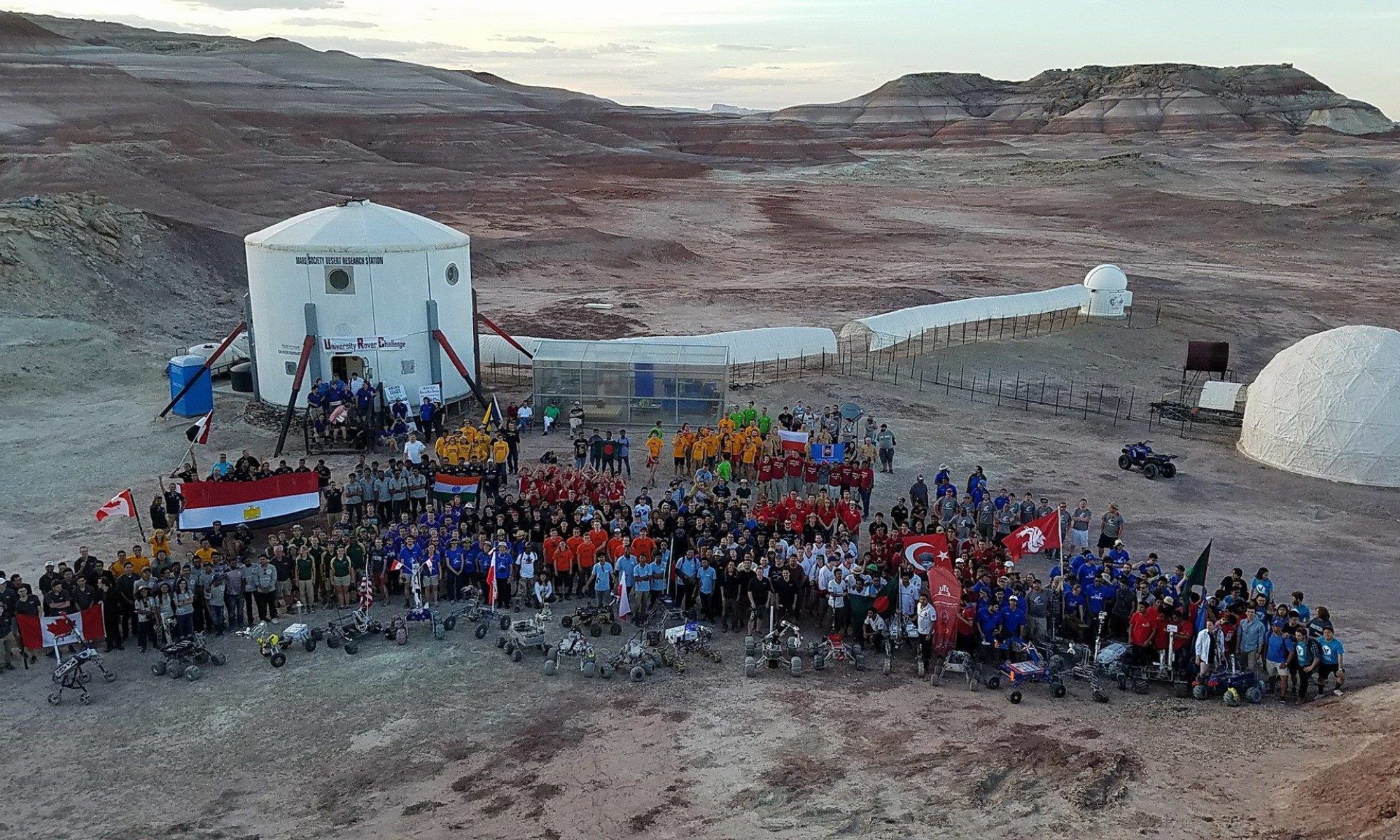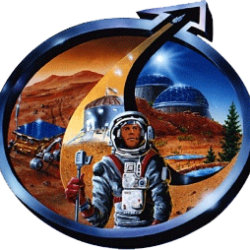Crew 314 Journalist report 13-04-2025
Sea of Shells—a location named for its geological past as the floor of an ancient Martian ocean—was the focus of today’s EVA. Four crew members departed the MDRS under the soft light of the Martian morning, their objective both scientific and operational. The site offered an ideal opportunity to collect environmental data and test equipment under field conditions.
Leading the EVA was GreenHab Officer Bérengère Bastogne, whose ongoing research explores the potential interaction between Martian soil and fungal life. Her aim is to assess how fungi might contribute to future life-support systems by facilitating nutrient cycles or soil regeneration on Mars. Today, she successfully collected two soil samples from the Sea of Shells to support this investigation. Accompanying her was Crew Engineer Antoine, who inspected a technical installation exposed to the strong winds of the previous sol to ensure its continued integrity.
The EVA team split into two rover crews, with Béatrice driving Opportunity alongside Antoine, and Bérengère piloting Curiosity with Arnaud, the EVA leader. Early into the drive, Mission Support advised the crew to reduce their speed to preserve battery life. By 10:20, the team had reached their target zone. Due to unexpectedly rapid battery depletion—Opportunity had dropped to 57%—the team made the decision to park earlier than originally planned. They proceeded on foot to complete their tasks, including drone-based aerial photography of the surrounding canyon, which will aid in terrain analysis and documentation.
The return journey was completed without incident, although communications were briefly disrupted between 11:26 and 11:40. Upon regaining signal at the intersection of Cow Dung Road and Galileo Road, the team confirmed the inspection of Antoine’s installation and completed a summary of their findings. Driving duties were rotated: Antoine briefly took over Opportunity, later returning control to Béatrice, while Arnaud drove Curiosity for the full return.
Meanwhile, at the MDRS, the fourth medical emergency simulation was conducted in the Science Dome. This session focused on teamwork, communication, and decision-making under pressure, key elements of Crisis Resource Management. The scenario was led by the female crewmembers, who executed the exercise with confidence and coordination—reinforcing the importance of regular training in isolated environments.
Inside the Hab, regular activities continued efficiently. The arrival of fresh supplies, including eggs, coffee, and red peppers, allowed the crew to prepare a homemade cake for dinner—boosting morale and adding a sense of normalcy. Physical training remained a priority, with biking and strength exercises scheduled as part of daily routines. Bérengère also contributed to team identity by sewing the MDRS logo onto the crew’s flight suits. Health and Safety Officer Odile took time to engage in a creative activity, sketching a peaceful scene to capture the day’s mood and provide a moment of mental relaxation.
Astronomer Louis spent the afternoon working in the observatory, capturing high-resolution images of the sun. He compiled and refined a composite image, continuing his documentation of solar activity from the Martian surface.
Later in the day, the Science Dome experienced a temporary power outage, attributed to an energy overload caused by cloud cover and reduced solar input. As a result, experiments by Bérengère and Batoul were postponed until solar charging resumed. Nevertheless, Batoul continued her sample preparation, adding color markers to aid in future identification and microscopic analysis.
Sol by sol, the mission advances through methodical research, logistical coordination, and shared dedication. While the Martian landscape remains silent and still, it serves as an active laboratory for discovery—one shaped by both science and the human pursuit of knowledge.

